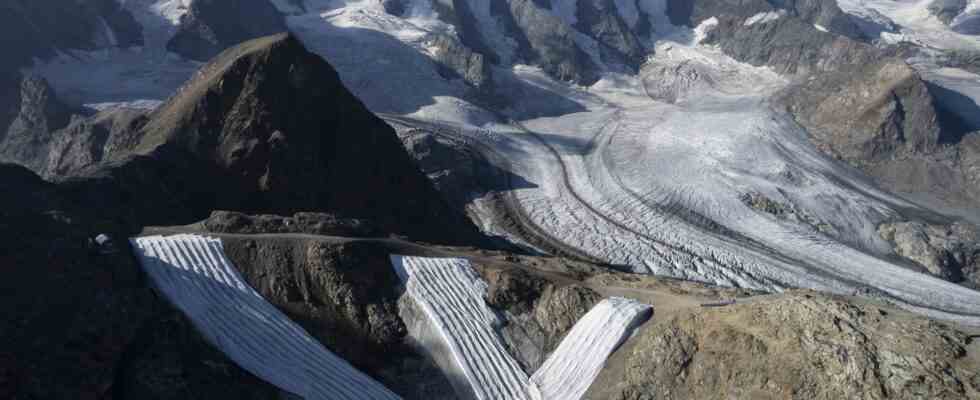Status: 08/22/2022 10:23 p.m
For the first time, researchers have reconstructed the development of Swiss glaciers in the 20th century. Their observations are alarming: since 1931, the ice volume has decreased by more than half. And the development is accelerating.
Switzerland lost almost half of its glacial ice between 1931 and 2016. That comes from one study published in the journal The Cryosphere out.
For the period from 1931 onwards, the researchers at the Swiss Federal Institute of Technology in Zurich (ETH) and the Swiss Federal Institute for Forest, Snow and Landscape Research (WSL) had, among other things, photos of surveyors who took photos at around 7,000 locations in the first half of the 20th century and had covered about 86 percent of the glaciated area of Switzerland. Using the historical images, they were able to estimate the volume and compare it with more recent measurements.
The scientists also base their analyzes on long-term observations of glaciers, measurements in the field, and photos from the air and summits. By using multiple sources, the researchers were able to fill gaps, as only a few glaciers in Switzerland have been regularly surveyed over the years. The teams also compared the surface topography of glaciers at different points in time, allowing calculations on the evolution of ice volume.
Decline further accelerated since 2016
In 1928, for example, the Fiescher glacier was still like a large sea of ice. In 2021 only small white spots could be seen on the mountainside. The ETH reports that ice shrinkage has even accelerated since 2016, according to the measurement data from the Glamos glacier measurement network. Accordingly, the ice volume of the glaciers has shrunk by a further twelve percent in the past six years.
Not all glaciers were equally affected. “The extent to which the volume has decreased essentially depends on three factors: firstly, at what height the glaciers are, secondly, how flat the glacier tongue runs out, and thirdly, how heavily the glaciers are covered with debris,” ETH reported.
According to experts, however, glaciers have not always shrunk over the past century. In the 1920s and 1980s, the mass of individual glaciers increased and individual glacier advances occurred. “Even if there has been an increase over a shorter period of time, it is still important to keep an eye on the overall picture. Our comparison between the years 1931 and 2016 clearly shows that there was a marked glacial retreat during this period,” said ETH glaciologist Daniel Farinotti – and the decline is accelerating.

